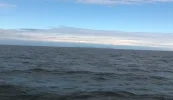A group of anti-nuclear campaigners have claimed Britain’s nuclear deterrent submarines are vulnerable to hackers – and their report setting out the “evidence” quotes, in part, from Wikipedia.
The British American Security Information Council (BASIC) reckoned that Blighty’s four
Vanguard-class nuclear missile submarines could be hacked using one of the variety of techniques that have sprung up over the last few years.
“Recent suggestions that the fleet is vulnerable have sometimes been met with complacency and claims that the isolated ‘air-gapped’ systems cannot be penetrated,” said
the report (PDF, 38 pages), which was co-authored by Russian security researcher Stanislav Abalmov and veteran British anti-nuke campaigner Paul Ingram, BASIC’s exec director.
The report sets out the usual generic attack vectors and the factors that mitigate these – chiefly, the fact that for months at a time the boat is air-gapped from the entire outside world by virtue of being hundreds of feet below the sea’s surface.







